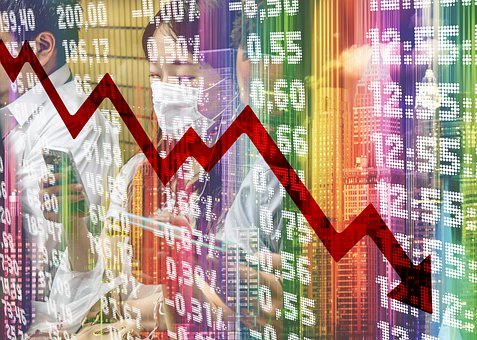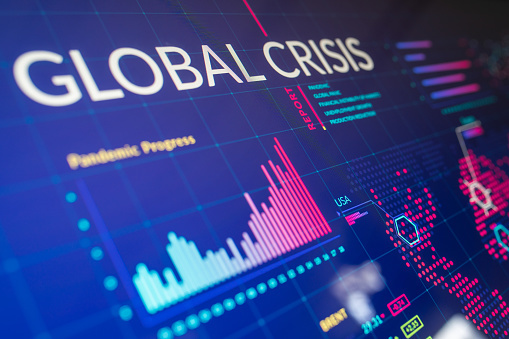How Has the Coronavirus (Covid-19) Threatened Global Financial Stability?

The Coronavirus pandemic has brought about unprecedented health and humanitarian crisis. The steps necessary to combat the pandemic and eliminate/bring it to manageable levels have caused an economic slump. At this point, there’s great uncertainty among the scientific community about the pandemic’s length and severity.
The latest Global Financial Report has shown that financial systems have already experienced a dramatic impact as a result of the Coronavirus. A further escalation of the pandemic could greatly impact financial stability globally causing massive disruptions.
Since the onset of the pandemic, prices of risky assets have greatly fallen. At the peak of the recent selloffs, risk assets experienced more than half of the decline they experienced in 2008/09. For example, most equity markets in both large and small economies have experienced declines of up to 30% or more. Credit spreads have spiked, especially for small-sized firms. Indications of stress have also manifested in short-term funding markets.
Volatility in the markets has increased significantly, in some instances to levels that were last recorded during the last major global financial crisis. With the increase in volatility, liquidity in the markets has in turn declined. What makes this significant is because even traditionally deep markets like the United States have fallen victim.

How to stabilize global financial systems and protect the global economy.
Central Banks’ interventions.
To protect the stability of global financial systems and protect the global economy, the first line of defense has been the central banks.
First, they have a greatly relaxed monetary policy by reducing policy rates specifically in the advanced economies. In the lower-income and emerging markets countries, half of their central banks have also lowered policy rates. The impacts of rate reductions will be strengthened through central banks’ regulation on the future route of asset purchase and monetary policy programs.
Secondly, central banks offered extra liquidity to the global financial system through open market operations.
Thirdly, some central banks have decided to increase the provision of the dollar liquidity using swap line arrangements.
Last but not least, central banks have reopened programs that were used during the last global financial crisis in addition to launching a variety of new programs, including the purchase of riskier assets like corporate bonds. By becoming “buyers of last resort” the central banks have helped contain the upward pressure on the price of credit. This ensures that firms and households continue accessing credit lines that are affordable.
Cheap credit lines are an essential tool that can be used to mitigate the adverse effects of the coronavirus since most households and small firms have already depleted their incomes and saving due to exposure by the pandemic. Without credit, these financially vulnerable households will not be able to cater for themselves and are likely to fall into abject poverty. For the small firms, without credit, most will likely fall into bankruptcy and close shop.
To date, the central banks have come up with plans to increase their provision of liquidity through asset purchases and loans by at least 6 trillion dollars.
Through these actions aimed at mitigating the adverse impact of COVID-19, investor sentiments have stabilized in recent months. Stress in some markets has declined somewhat and risky asset prices have also partially recovered from the slump.
All in all, the tightening of the financial conditions globally since the start of COVID-19—coupled up with the dramatic decline in the economic forecast has tilted the one-year-ahead global distribution of growth greatly to the left. This shows a great increase in risks to financial stability and growth. There’s now a 5% likelihood that the global economic growth will fall below 7.4%.

Conclusion.
As it so often happens during financial crises, developing and emerging markets will often bear the greatest burden. So far, the developing and emerging markets have endured the most severe portfolio flow reversal about 100 billion dollars or 0.4% of their GDPs.
Together, fiscal, financial, and monetary policies should target to cushion the effect of the Coronavirus shock and to guarantee a sustainable and steady recovery once the virus is eliminated or brought under manageable levels. Continuous global coordination will be vital to offer assistance to vulnerable nations, to combat financial instability, and to reinstate market confidence.








